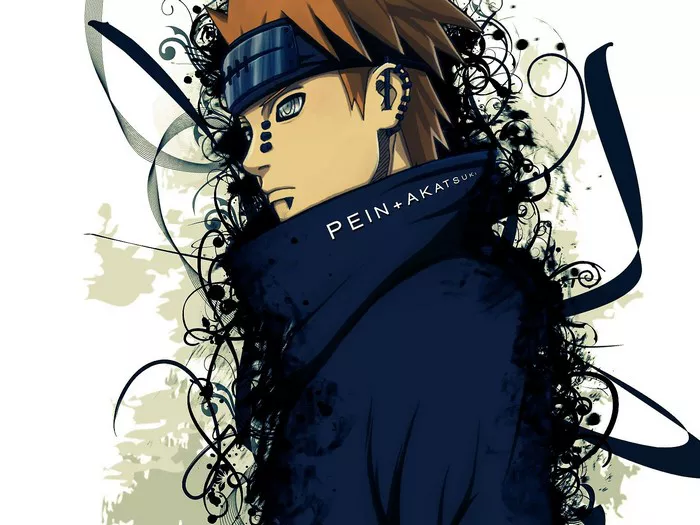In the expansive world of Naruto, the Akatsuki organization stands as one of the most formidable and mysterious groups, comprised of powerful rogue ninja with ambitions of world domination. At the helm of this shadowy organization is Pain, a enigmatic figure shrouded in mystery and intrigue. In this comprehensive analysis, we delve into the origins, motivations, and impact of Pain within the Naruto universe, unraveling the complex layers of this iconic character.
The Rise of Pain: A Cloaked Figure in the Shadows
Pain first emerges as a central antagonist during the Naruto Shippuden series, where he orchestrates a series of devastating attacks on the Hidden Leaf Village, plunging the ninja world into chaos. Initially depicted as a cloaked figure with multiple bodies, each possessing unique abilities, Pain presents a formidable challenge to Naruto Uzumaki and his allies, testing their strength, resolve, and beliefs.
Origins and Identity: Unraveling the Mystery
Pain’s true identity is revealed to be Nagato, a former orphan from the Hidden Rain Village who endured a traumatic childhood marked by war, suffering, and loss. Nagato’s experiences as a child soldier and witness to the atrocities of war shaped his worldview and fueled his desire to bring about peace through radical means.
Nagato’s transformation into Pain is facilitated by the influence of the Akatsuki’s founder and mentor, Obito Uchiha, who manipulates Nagato’s grief and resentment to further his own agenda of revenge and control. Under Obito’s guidance, Nagato adopts the alias of Pain and assumes leadership of the Akatsuki, becoming a symbol of fear and power within the ninja world.
The Six Paths of Pain: Instruments of Destruction
One of Pain’s most distinctive features is his ability to control six bodies simultaneously, each imbued with a different aspect of his power. Known as the Six Paths of Pain, these bodies possess a variety of abilities derived from the Rinnegan, a legendary dojutsu possessed by Nagato.
The Six Paths of Pain include:
Deva Path: The Deva Path possesses the ability to manipulate gravity, allowing Pain to repel or attract objects with immense force. This ability grants Pain formidable offensive and defensive capabilities, making him a formidable opponent in battle.
Asura Path: The Asura Path specializes in physical augmentation and weaponry, enabling Pain to transform his body into a powerful weapon and unleash devastating attacks on his enemies.
Human Path: The Human Path possesses the ability to extract information from individuals by physically removing their soul. This ability grants Pain valuable intelligence-gathering capabilities, allowing him to gather information on his enemies and their plans.
Animal Path: The Animal Path enables Pain to summon and control a variety of animal summons, ranging from giant creatures to mythical beasts. This ability provides Pain with additional firepower and versatility in combat.
Preta Path: The Preta Path has the ability to absorb chakra, making Pain immune to most ninjutsu and rendering him virtually invulnerable to conventional attacks. This ability grants Pain a significant advantage in battle, as he can neutralize his opponents’ techniques and replenish his own chakra reserves.
Naraka Path: The Naraka Path serves as Pain’s judge and executioner, possessing the ability to summon the King of Hell and pass judgment on those who defy Pain’s will. This ability allows Pain to enforce his rule with fear and intimidation, ensuring obedience from his followers and enemies alike.
Philosophy and Ideology: The Pursuit of Peace Through Pain
Central to Pain’s character is his philosophy of achieving peace through pain and suffering. Motivated by the traumas of his past and the injustices of the world, Pain believes that true peace can only be attained through the collective experience of suffering and loss. He views conflict and violence as inevitable consequences of human nature, and seeks to end the cycle of hatred and war by imposing his will upon the world.
Pain’s radical ideology leads him to commit acts of extreme violence and destruction, including the destruction of entire villages and the deaths of countless innocents. However, Pain sees these actions as necessary sacrifices in service of a greater cause—the establishment of a new world order governed by fear and obedience.
Redemption and Legacy: Nagato’s Final Act
Despite his role as a villain and antagonist within the Naruto narrative, Pain ultimately undergoes a profound transformation through his interactions with Naruto Uzumaki. Through their battles and conversations, Naruto challenges Pain’s beliefs and inspires him to reconsider his path.
In a climactic showdown, Naruto confronts Pain and appeals to his humanity, urging him to abandon his quest for vengeance and seek redemption instead. Touched by Naruto’s words and actions, Pain sacrifices himself to revive those he had killed during his assault on the Hidden Leaf Village, atoning for his sins and leaving behind a legacy of hope and reconciliation.
Conclusion: Pain’s Legacy in the Naruto Universe
In conclusion, Pain stands as one of the most complex and compelling characters within the Naruto universe, embodying themes of trauma, redemption, and the pursuit of peace. From his origins as a traumatized orphan to his transformation into a feared and respected leader, Pain’s journey is marked by tragedy, sacrifice, and ultimately, redemption.
Through his actions and beliefs, Pain challenges the traditional notions of heroism and villainy, forcing both characters and readers to confront the complexities of morality and the nature of conflict. Despite his status as a villain, Pain’s legacy endures as a testament to the power of empathy, forgiveness, and the capacity for redemption within us all.


